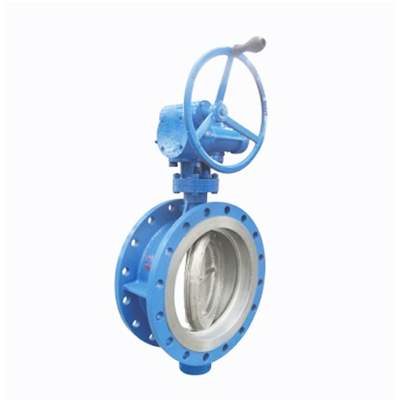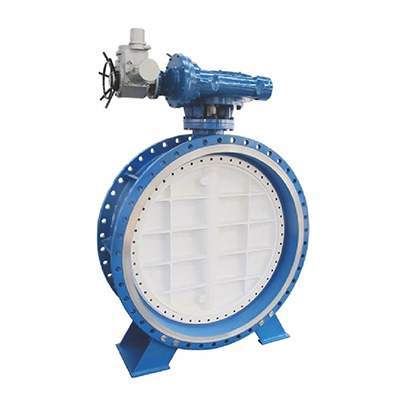Welcome to My Blog!
Before we dive into the content, if you’re interested in our products or have any questions, please feel free to visit our Contact Us page on the website. Our team is ready to assist you with inquiries, orders, or any support you may need.
Now, let’s get started on our journey together. I hope you find the content here insightful, engaging, and valuable.
Introduction

Butterfly valves are an essential component in water treatment systems, offering reliable flow control and efficient operation. These valves consist of a rotating disc mounted on a shaft that can be turned to regulate fluid flow. Butterfly valves are widely used because they are compact, lightweight, and cost-effective compared to other valve types such as ball or gate valves.
In water treatment, proper valve selection ensures optimal system performance, reduces maintenance costs, and prevents system failures. Understanding the different types of butterfly valves is critical for engineers, plant operators, and procurement professionals. Common types include single offset, double offset, and triple offset designs, each with unique advantages and suitable applications.
Single Offset Butterfly Valves (Concentric Type)
Single offset butterfly valves, also known as concentric butterfly valves, feature a disc positioned centrally in the valve body. This simple design is ideal for low-pressure and low-temperature applications in water systems.
Advantages:
- Cost-effective and easy to maintain
- Suitable for moderate flow control
- Compact and lightweight design
Limitations:
- Limited sealing performance under high pressure
- Not ideal for corrosive or abrasive fluids
Applications:
Single offset butterfly valves are commonly used in municipal water distribution, irrigation systems, and general-purpose water pipelines.
Double Offset Butterfly Valves (Double-Eccentric)
Double offset butterfly valves, or double-eccentric valves, have a disc offset from the shaft and the seat, which reduces friction and wear during operation. This design provides better sealing performance and longer service life compared to single offset valves.
Sealing Mechanism and Durability:
The offset design ensures minimal contact between the disc and seat when opening or closing, reducing wear and improving reliability. These valves are suitable for moderate to high-pressure applications.
Applications in Water Treatment:
- Wastewater treatment plants
- Industrial water systems
- Cooling water circulation
Double offset butterfly valves are ideal when higher durability and tighter shut-off are required.
Triple Offset Butterfly Valves (Triple-Eccentric)
Triple offset butterfly valves are designed for demanding conditions such as high pressure, high temperature, and corrosive fluids. The triple-eccentric design ensures the disc moves away from the seat during operation, minimizing wear and enabling bubble-tight sealing.
Performance Benefits:
- Excellent sealing under high pressure and temperature
- Low operating torque due to offset design
- Long lifespan in challenging environments
Best Applications:
Triple offset valves are commonly found in water treatment facilities dealing with high-pressure pipelines, chemical dosing systems, and industrial process water applications.
Wafer, Lug, and Flanged Butterfly Valves
Butterfly valves also differ by their connection types: wafer, lug, and flanged. Choosing the right type ensures proper installation and maintenance flexibility.
Wafer Valves:
- Positioned between two flanges and held by bolts
- Compact and economical
- Suitable for systems without frequent valve removal
Lug Valves:
- Bolted on both ends, allowing one side of the pipeline to be removed without shutting down the system
- Ideal for maintenance-heavy applications
Flanged Valves:
- Bolted directly to pipeline flanges
- Robust and suitable for high-pressure water systems
Materials and Sealing Options for Butterfly Valves
Material selection and sealing type are critical for performance and longevity in water treatment systems.
Common Materials:
- Stainless steel for corrosion resistance
- Ductile iron for general-purpose applications
- PVC for chemical resistance and lightweight systems
Sealing Options:
- Rubber for low to medium pressure
- PTFE for chemical resistance
- Metal seals for high-pressure, high-temperature applications
Selecting the correct material and seal ensures reliability and reduces maintenance in demanding water systems.
Actuation Methods for Butterfly Valves
Butterfly valves can be operated manually or automatically depending on the system requirements.
Manual Operation:
- Simple handwheel or lever
- Suitable for small-scale water pipelines
Electric and Pneumatic Actuators:
- Enable remote control and automation
- Ideal for large water treatment plants requiring precise flow regulation
Automation enhances operational efficiency, reduces labor costs, and improves process safety.
How to Choose the Right Butterfly Valve for Your Water Treatment System
Selecting the appropriate butterfly valve involves evaluating several key factors:
- Flow rate and pressure: Ensure the valve can handle system conditions.
- Medium type: Consider water quality, chemical content, and abrasiveness.
- Temperature: Verify material and seal compatibility with fluid temperature.
- Maintenance requirements: Choose a design that facilitates inspection and repair.
- Cost vs. performance: Balance initial investment with long-term reliability and efficiency.
By considering these factors, plant operators can maximize system efficiency and minimize downtime.
Common Problems and Troubleshooting of Butterfly Valves

Even high-quality butterfly valves may encounter issues if not properly selected or maintained.
Leakage Issues:
- Often caused by worn seals or incorrect installation
- Regular inspection and proper material selection can prevent leaks
Valve Sticking or Sluggish Operation:
- May result from debris buildup or lack of lubrication
- Routine cleaning and maintenance help maintain smooth operation
Replacement or Upgrade Signs:
- Persistent leakage
- Frequent actuator failure
- Visible wear or corrosion on the valve disc or seat
Timely troubleshooting ensures long-term system reliability and reduces operational costs.
Conclusion
Choosing the right butterfly valve type is essential for the efficiency, reliability, and longevity of water treatment systems. Single offset valves are ideal for low-pressure applications, double offset valves provide durability and better sealing, and triple offset valves excel in demanding environments. Additionally, selecting the appropriate connection type, material, seal, and actuation method is crucial for optimal performance.
For water treatment engineers and operators, investing time in proper valve selection, installation, and maintenance not only improves system performance but also minimizes downtime and operational costs. By understanding the differences and applications of butterfly valve types, you can make informed decisions that enhance your water treatment operations.
FAQ
What are the main types of butterfly valves?
The main types include single offset (concentric), double offset (double-eccentric), and triple offset (triple-eccentric) butterfly valves, each designed for specific pressure, temperature, and sealing requirements.
Which butterfly valve type is best for water treatment systems?
Double offset butterfly valves are commonly used due to their durability and reliable sealing, while triple offset valves are ideal for high-pressure or demanding applications.
What materials are used for butterfly valves in water systems?
Common materials include stainless steel, ductile iron, and PVC, with seal options like rubber, PTFE, or metal depending on pressure and chemical resistance needs.
What are the differences between wafer, lug, and flanged butterfly valves?
Wafer valves are compact and placed between flanges, lug valves allow pipeline disconnection without system shutdown, and flanged valves are robust for high-pressure systems.
How can butterfly valve issues be prevented in water treatment applications?
Regular maintenance, proper material selection, correct installation, and timely troubleshooting of leaks or sticking can ensure optimal performance and longevity.
Need Help Choosing the Right Butterfly Valve for Your Water Treatment System?
If you’re unsure about which butterfly valve type is best for your water treatment system, our experts are here to help. Contact us today for a personalized consultation, and ensure your system operates efficiently and reliably. Don’t wait until problems arise—get in touch now to optimize your water treatment operations and protect your infrastructure!
